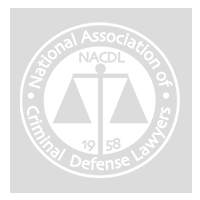AN INTRODUCTION TO THE U.S. FEDERAL SENTENCING GUIDELINES
Part I - Article by Vicki Koutsogiannis
What is the Purpose of the Federal Sentencing Guidelines?
If you are facing federal charges, you should immediately consult with a lawyer to determine what sentences could be imposed should you go to trial and lose, or decide to plead guilty. Although federal sentences are rather complicated, seeking an experienced attorney will ease your confusion and assist you in making your decision as to how to go forward with your case.
The Federal Sentencing Guidelines are the product of the U.S. Sentencing Commission, an agency of the judicial branch. The reason we have the Federal Guidelines today is because Congress passed the Sentencing Reform Act of 1984, where it focused on three objectives: fairness, uniformity, and proportionality in sentencing those convicted of a federal offense. With respect to "uniformity," Congress sought to close the gap for the discrepancies in sentences which were imposed for similar offenders throughout the country. For example, compare two defendants in completely separate cases that are facing the same charge of Trafficking in Cocaine - 500 grams or more. In such a case, before the Guidelines, one defendant could receive a far longer sentence than the other, even assuming they had similar criminal histories.
Next, the Guidelines determined that "proportionality" should also determine federal sentences. This means that different instances of the same type of crime will be judged according to influential factors that either increase or decrease the severity of the crime. For example, the number of prior offenses can count against a particular defendant who is being sentenced for armed robbery. If Defendant A has no prior history of armed robbery or violent crimes, while Defendant B has a history of armed robbery and assault and battery, then Defendant B will likely receive an aggravated (higher) sentence for the same crime of armed robbery than Defendant A.
Is there a comprehensive list of federal crimes?
On its website, the U.S. Sentencing Commission has provided a list of all the crimes punishable by Federal law. The list of actual crimes begins in "Chapter Two" and includes all subparts of that chapter (from A – X). It is important to note that the subparts of Chapter Two, labeled "Part A," and so on, are not an alphabetical list of the different types of crimes. Rather, crimes are organized by category of offenses. The below examples are by no means an exhaustive list of federal crimes. For more information see www.ussc.gov/guidelines.
Although this list is very long, the different offenses are broken down in categories that include the following, by way of illustration:
- Chapter Two – Offense Conduct; Part A: Offenses Against the Person ; 1. Homicide.
- Chapter Two – Offense Conduct; Part K - Offenses Involving Public Safety; 2. Firearms.
What are the other "Chapters" in the Guidelines Manual?
As mentioned above, only Chapter Two lists specific types of criminal offenses. The remaining Chapters in the Guidelines Manual serve other purposes that help to determine, in addition to the type of crime, the particular guideline range that is available for a defendant. In "Chapter Three – Adjustments," there are several factors that can affect a defendant's sentence. Among these are: Victim-Related Adjustments, Role in the Offense, Obstruction and Related Adjustments, Multiple Counts, and Acceptance of Responsibility.
Going back to the discussion about "proportionality," Chapter Three seeks to impose a sentence that is proportional to the offense, as it relates to these factors. For instance, a defendant's contribution to a crime as a "minor participant" may help to decrease the base level by a few points. So long as the defendant's "mitigating role" applies, then the defendant may receive a shorter sentence than other participants in the same scheme or who are charged with the same crime. Likewise, "aggravating role" can also increase the base level for a defendant who was "an organizer or leader of a criminal activity," where five or more participants were involved.
Chapter Four covers one's criminal history, which can result in more points added to one's base level. Chapter Five is very useful because it provides a Sentencing Table to assist in calculating a prospective sentence. Additionally, other topics are covered in this chapter, from imprisonment to sentencing options. One more important section in Chapter Five is Part K – Departures, because it covers grounds for departing from one's guideline range. Departure from the guideline range can be either upward or downward, resulting in a higher sentence or lower sentence that one's calculated guideline range. The remaining chapters are: Chapter Six - Sentencing Procedures, Plea Agreements and Crime Victims' Rights, Chapter Seven - Violations of Probation and Supervised Release, and Chapter Eight – Sentencing of Organizations.
The next article, has more information about the guidelines that will be covered.
Including the "base level" of offenses.









